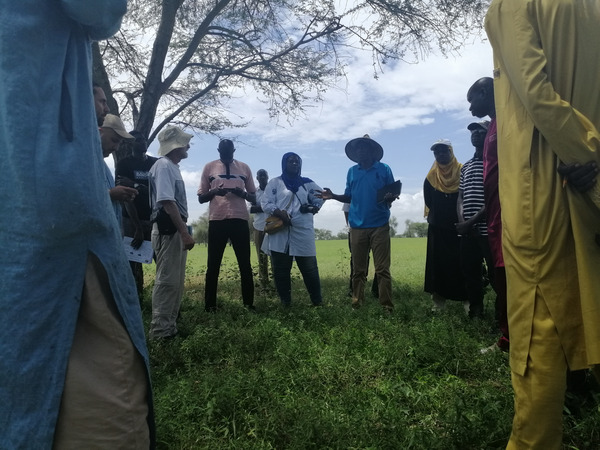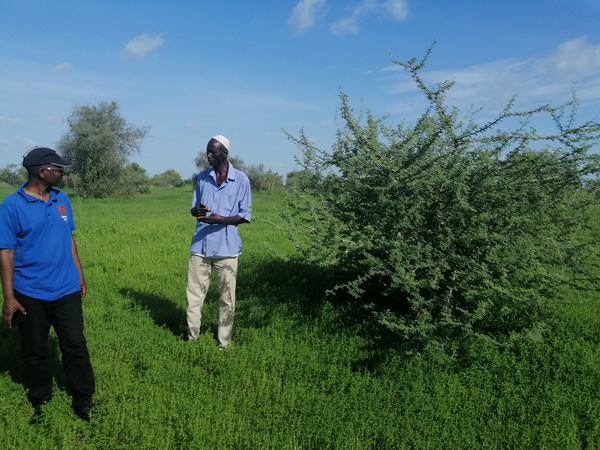18 months after the people from Ouarkhokh commune were contacted and the socio-ecological situation of this agro-sylvo-pastoral site in the central North of Senegal was analysed, a first two-day encounter in September 2022 between farmers and project staff from Senegal and FiBL took place. Over 15 researchers and advisers of SustainSahel and more than 40 selected Innovation platform members and lead farmers (crop and livestock) met and exchanged their respective experiences.
The main concern of the farmers was an herb they called “njoja”. They reported that this "weed" had invaded fields in the region over the last 10 years, reducing the fodder quality and causing health problems in the livestock. They considered this plant as a “weed”. The researchers of Senegal were unaware of this farmers problem. The institutional set-up of SustainSahel immediately reacted: The ISRA researchers based at the nearby station in Dahra (CRZ) included this plant, in the meantime identified as Diodia scandens, in the experimental design with useful trees and shrubs. To note that SustainSahel is promoting the better integration of shrubs and trees in order to address desertification, food insecurity and poverty. Already after 1 year, the researchers from various disciplines, soil biology, agroforestry, agronomy, livestock sciences, geography and sociology, and the farmers could observe a higher biodiversity under the canopy of the trees and less dominance of "njoja" or Diodia scandens. The researchers working on this particular issue could inform the rural population, organised in 89 villages and living from both livestock (mainly cattle and sheep) and crop farming, that this “weed” will most probably disappear in some years, as it has been observed in Nigeria and elsewhere in Sub-Saharan Africa.
We encouraged the members of Ouarkhokh village, the main village within the commune with the same name, to use their 400 ha enclosed communal farm south of the village to further observe the impact of the various trees on the ecology of the grassland. The installed farm experiments measuring the impact of the trees and shrubs combined with various fertilisation options (manure, mulch, micro dosage) indicate already after just one year some trends, which were discussed on the second day with the larger groups of representatives of the community. The interest of the farmers on the co-designed experiments was high from the beginning. Most participants are already now convinced that they will stop burning the shrubs and instead use them as mulch to improve the degraded soil fertility.
The enclosure (fence) of the communal farm is not only protecting against bush fires and uncontrolled grazing, as part of the internal regulation of the community, but allows communal businesses, like selling hay and straw to outsiders and soon the high priced gum (Acacia senegal) which was planted three years ago and will be exploitable in two years’ time. These measures will contribute to the intensification of farming, which has become a priority, as the demographics do not allow any fallows over three years. Who knows, maybe the peasant women of Ouarkhokh will soon use the “weed” as a raw material for a new business, as researchers will find ways to use its pharmacological features known within the West African system of medicine and/or as a poultry feed (Essiett, 2010) replacing expensive imported products. We expect more co-innovation to happen, as the (social) process of co-innovation for intensification of agroecology has only just started.
Further information
PDF link
scholarsresearchlibrary.org: Essiett, 2010 - Pharmacognostic Studies of the Leaves and Stem of Diodia scandens Sw in Nigeria
Written by: Gian Nicolay, FiBL, Co-lead WP2




 tap and then scroll down to the Add to Home Screen command.
tap and then scroll down to the Add to Home Screen command.